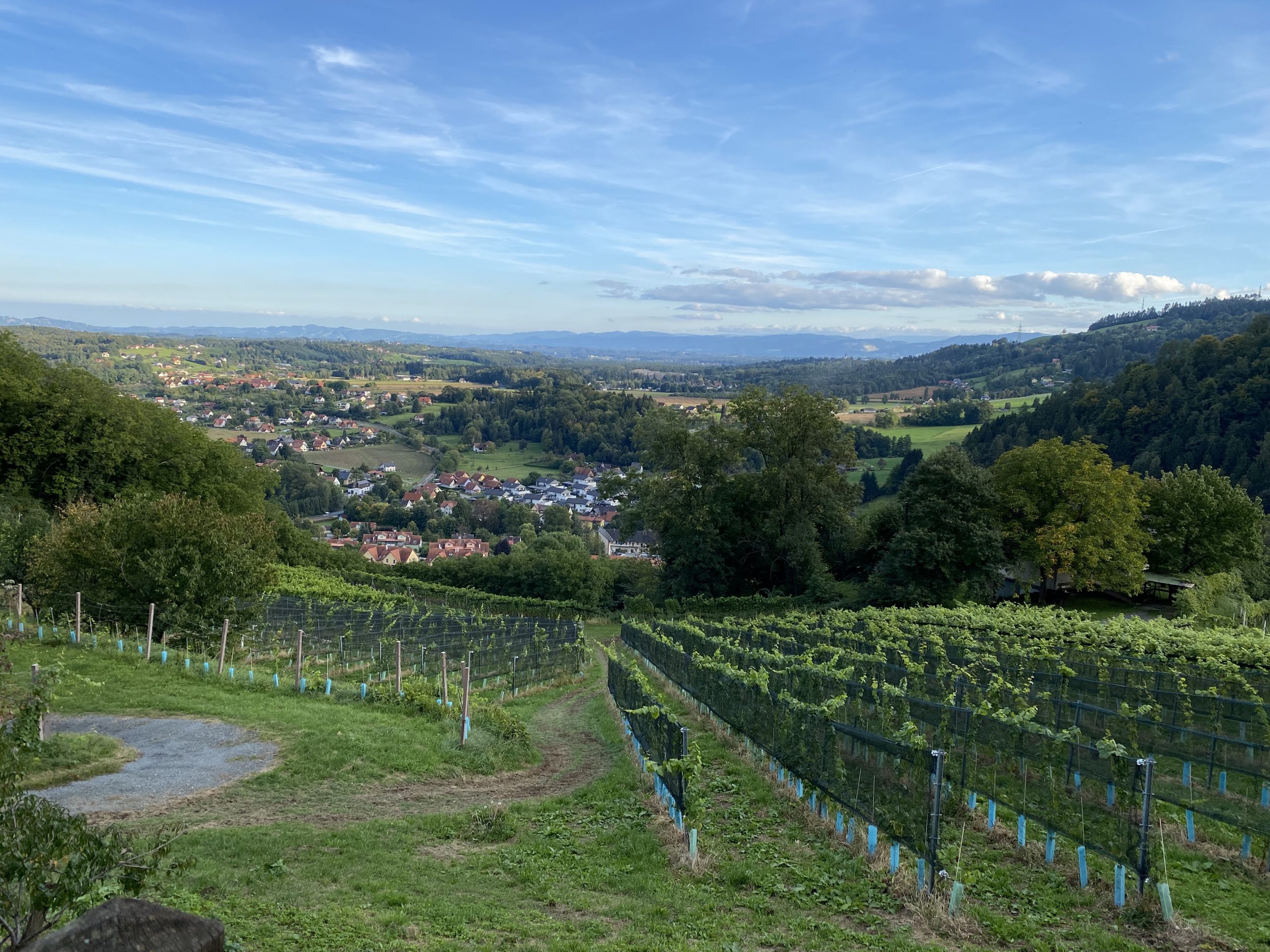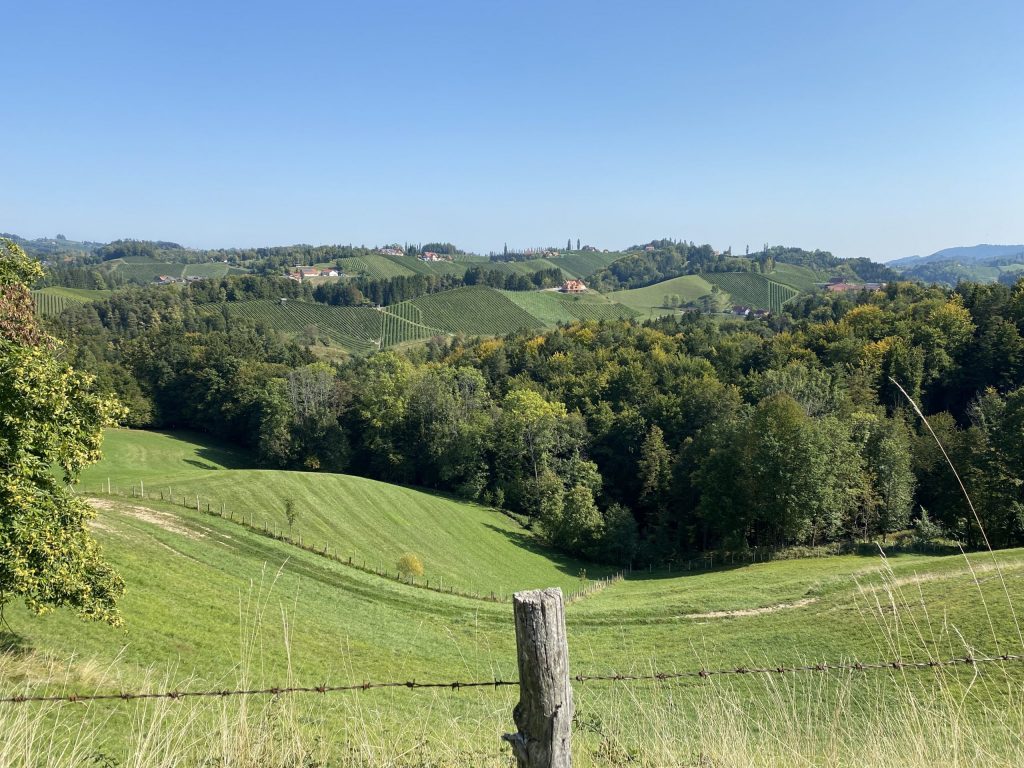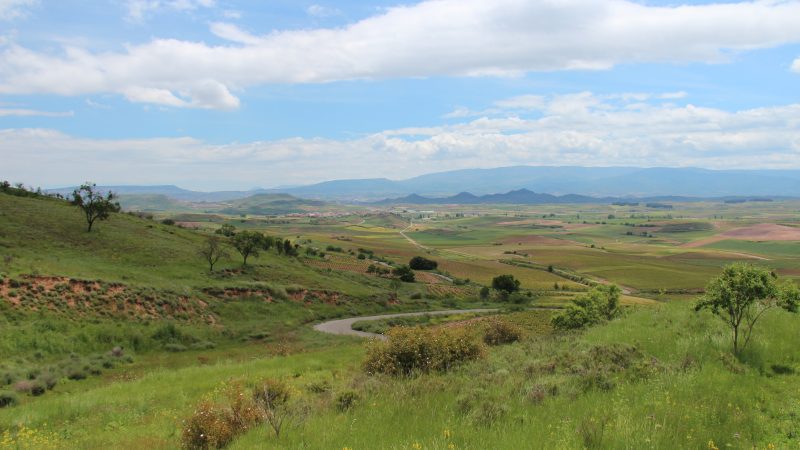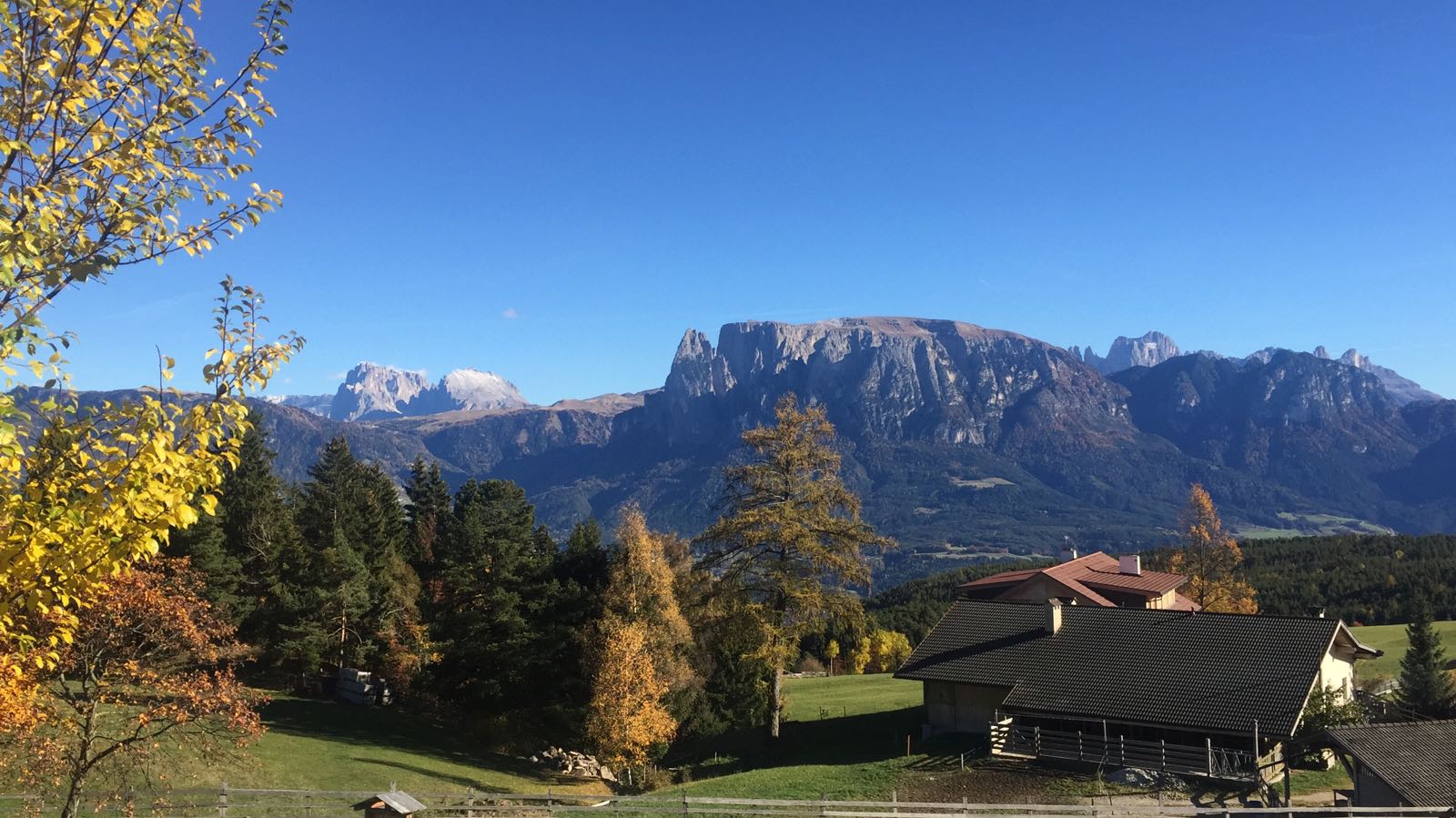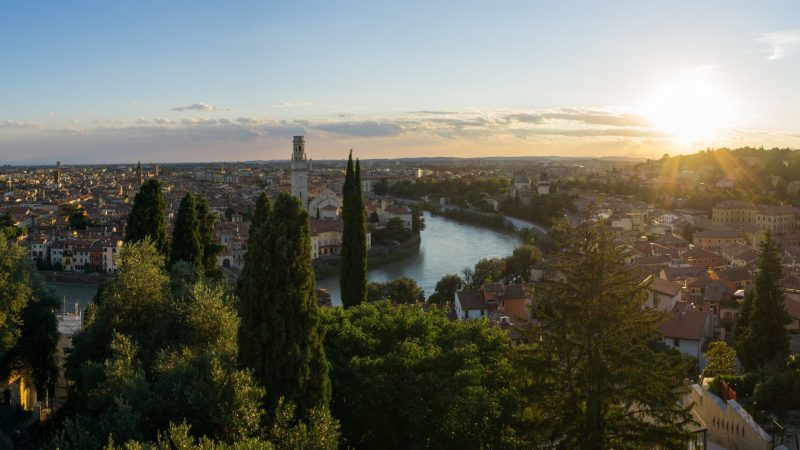Austria is a well-known travel destination in Europe, but I’m going to highlight part of one of its lesser-known regions. Styria (German: Steiermark) is located in the southeastern part of Austria and has a landscape as varied as the country itself.
Styria is a large region geographically, so in this post I’ll focus on its south-central and south-west parts. To keep things simple, from here on I’ll simply refer to it as southern Styria. I’ve just returned from a visit there, so I can give a firsthand account and share photos that were taken just days ago!
Most of my time was spent in the districts of Leibnitz and Deutschlandsberg, but I also paid a visit to the lovely capital of Graz, so I’m including it here as well.
Get ready to be enchanted by the scenery, culture and cuisine of beautiful southern Styria!
Southern Styria will appeal to:
- Wine lovers
- Cycling, mountain biking, and hiking aficionados
- Foodies
- Architecture buffs
This page may contain affiliate links; if you make a purchase through them, I may receive a small commission at no cost to you.
The Basics
Styria is Austria’s second largest province, and its capital city of Graz is also the country’s second largest. Graz is a relaxed, friendly place with fantastic historical and modern architecture, interesting museums, a rushing river (the Mur) flowing through its center, and the imposing Schlossberg towering over it all. It has a slightly Italian feel to it, thanks to many Renaissance buildings in the old center. A large student population keeps the atmosphere youthful, and there are lots of great restaurants featuring both local and international cuisine.
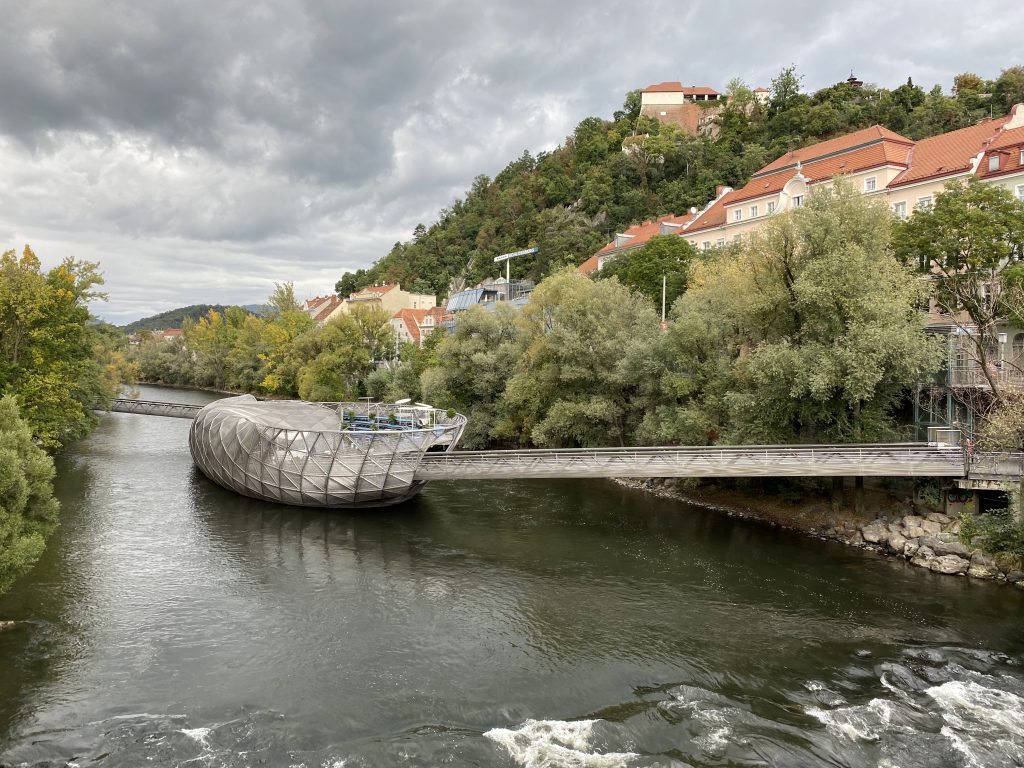
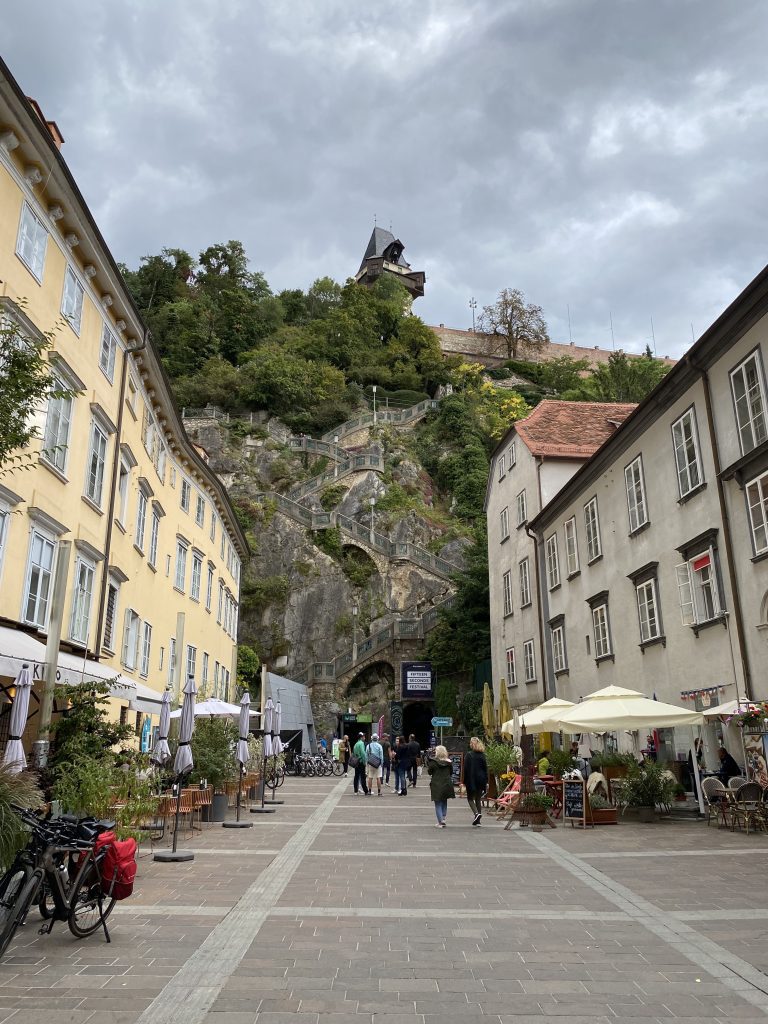
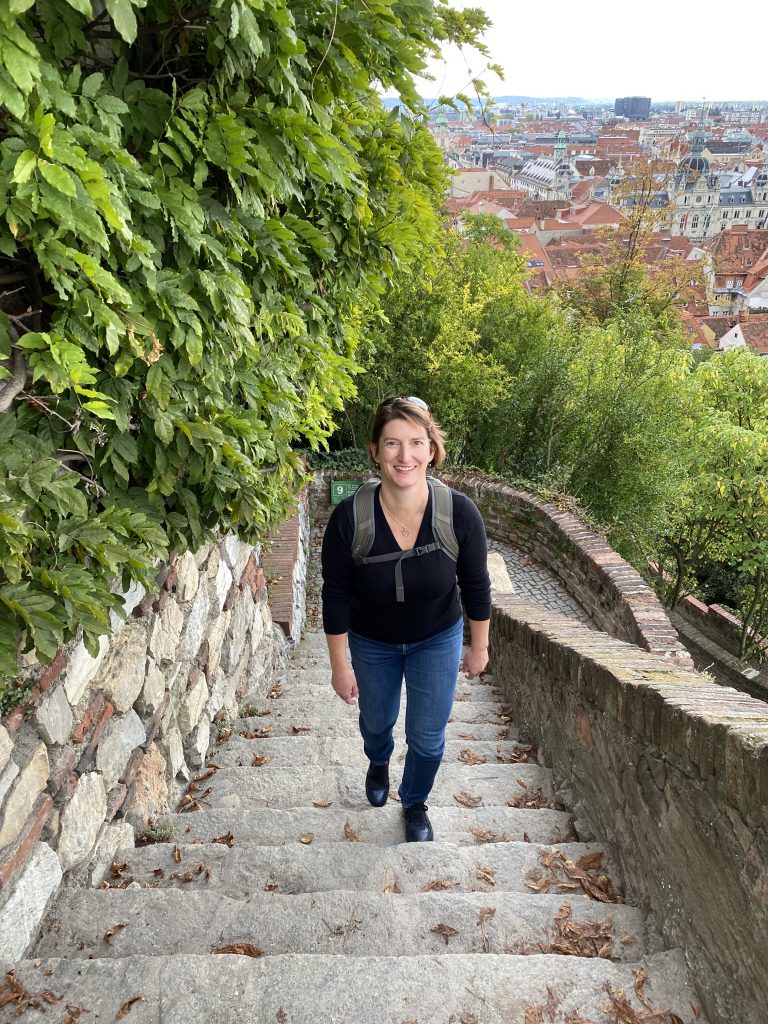
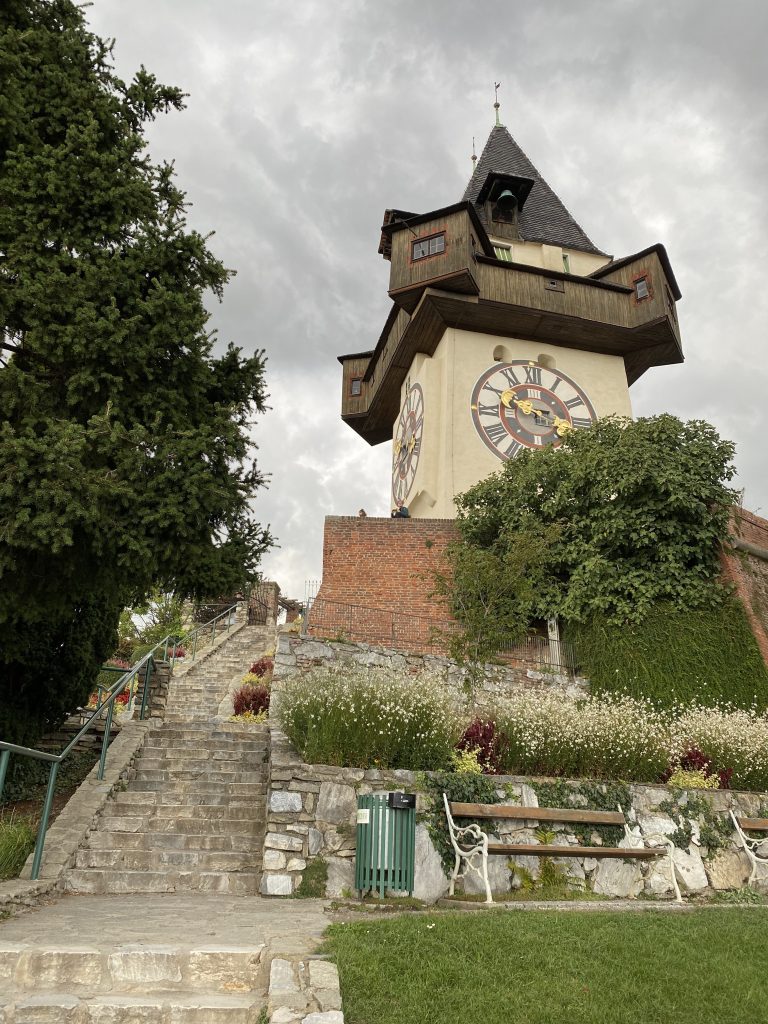
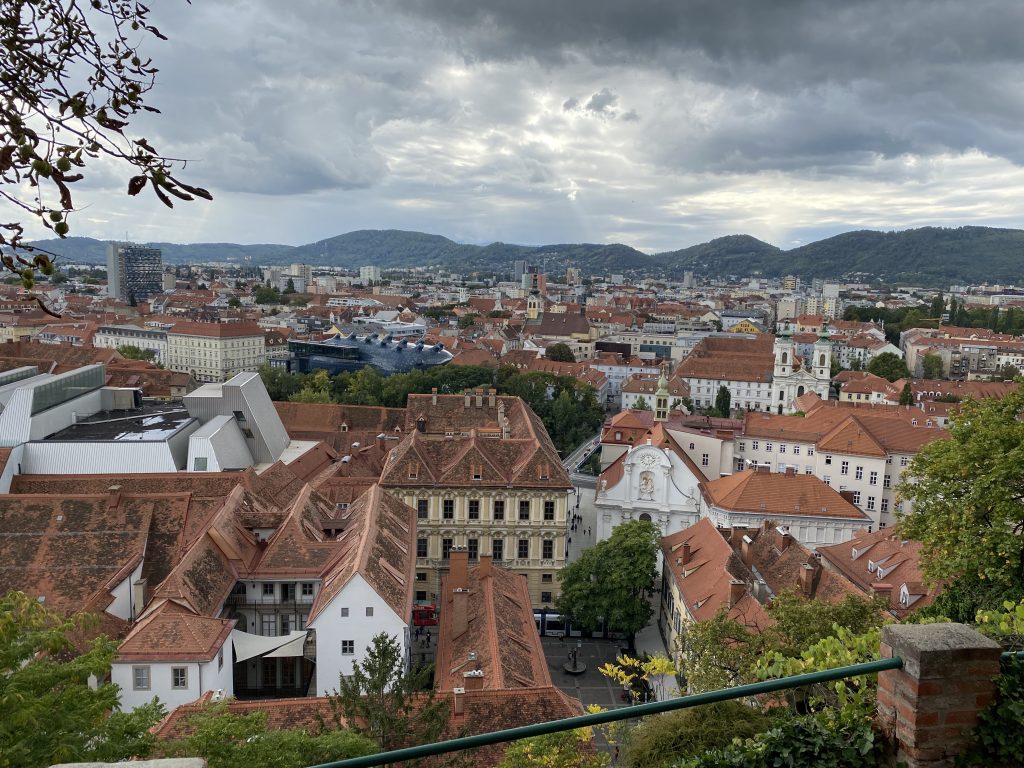
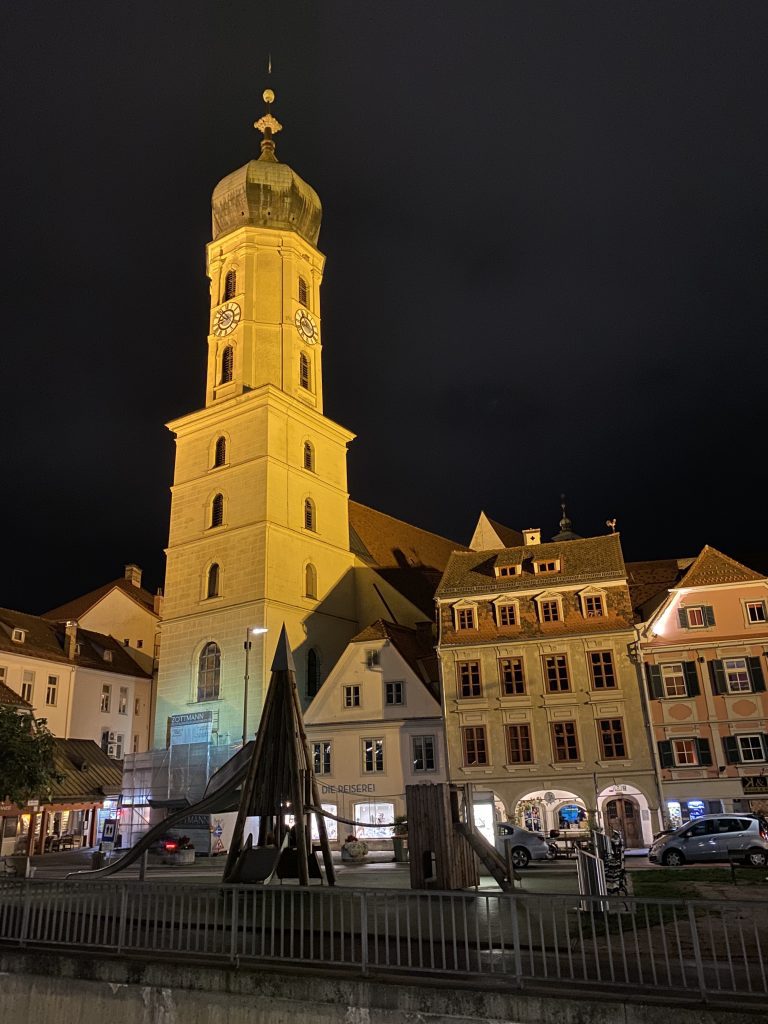
Areas to the south and southwest of Graz include wine regions characterized by rolling hills, and southern Styria is often referred to as the ‘Styrian Tuscany’ because of its particularly scenic landscape that reminds one of the Italian region. Small towns and rural lodgings dominate here, vineyards climb the hillsides, and the area is ideal for hiking and bicycling. The climate is somewhat mild for central Europe, but there are nonetheless four distinct seasons.
One neat and really distinctive man-made feature of this area that I must mention: the Klapotetz. It looks a bit like a windmill but it’s got nothing to do with milling; its original purpose was in fact to scare off birds with the loud clickety-clack noise it makes when it rotates (blown into motion by the breeze). They’re all over the place, and typically Styrian.
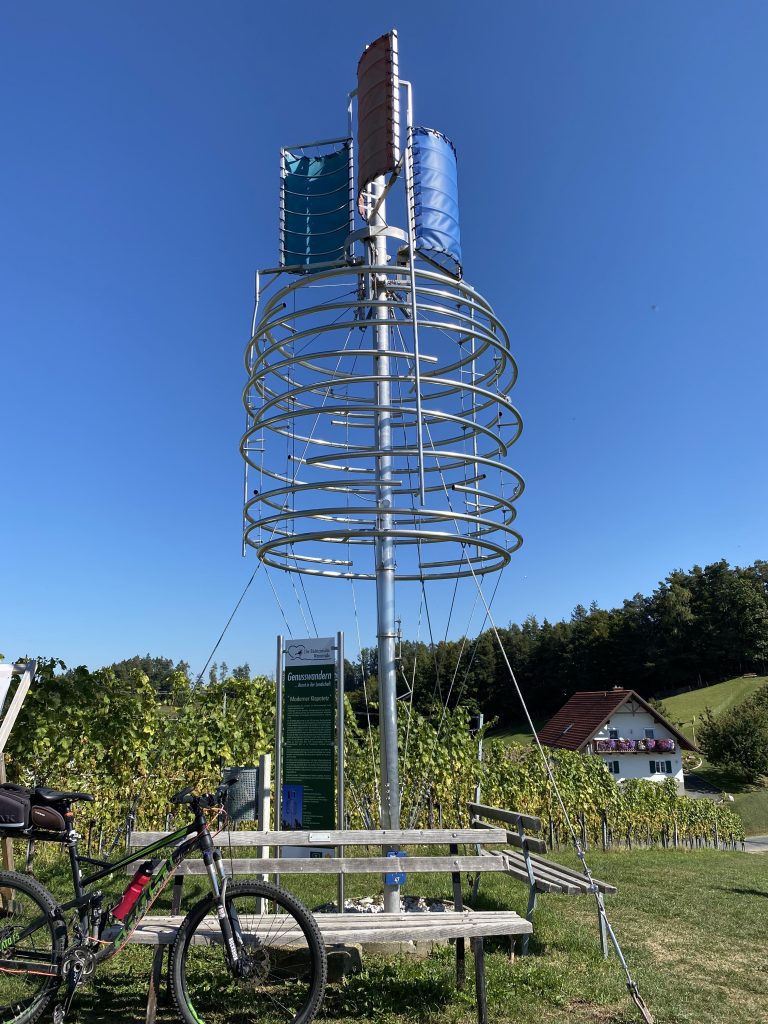
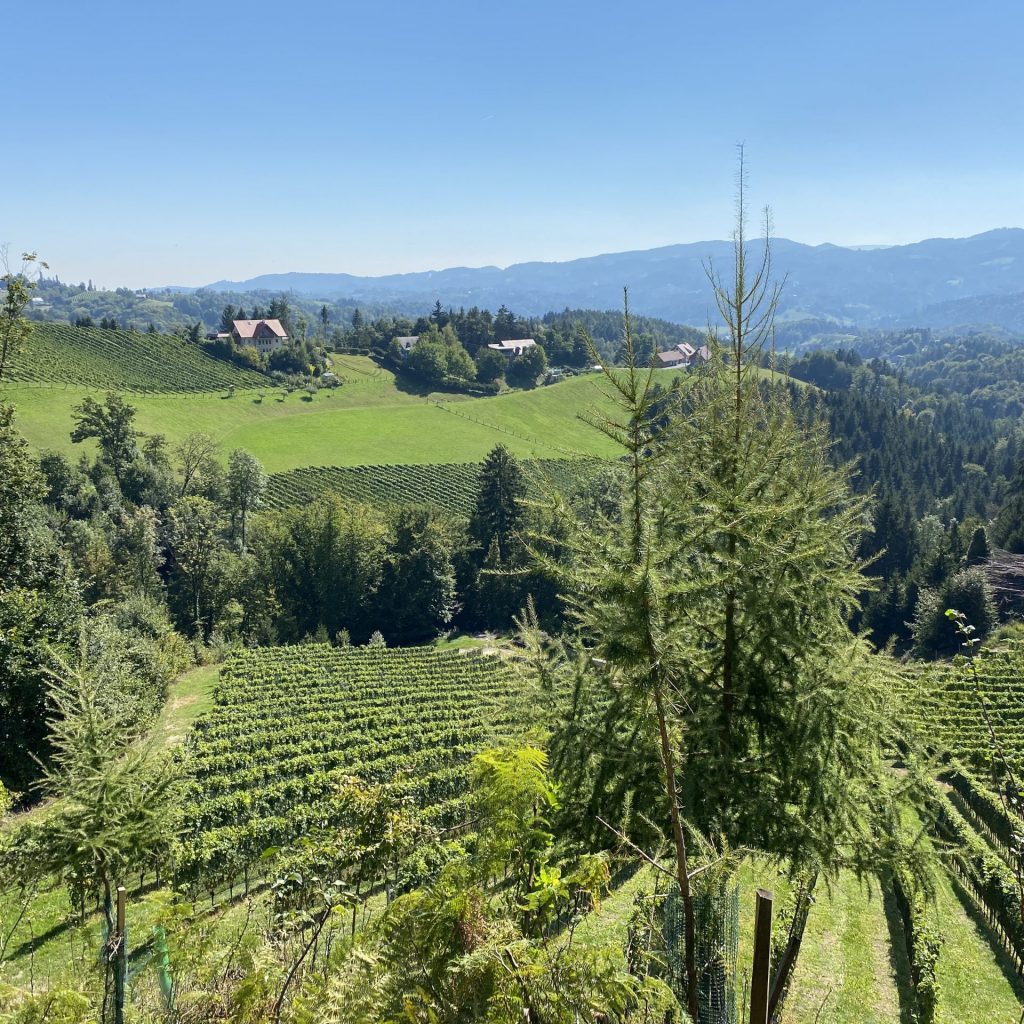
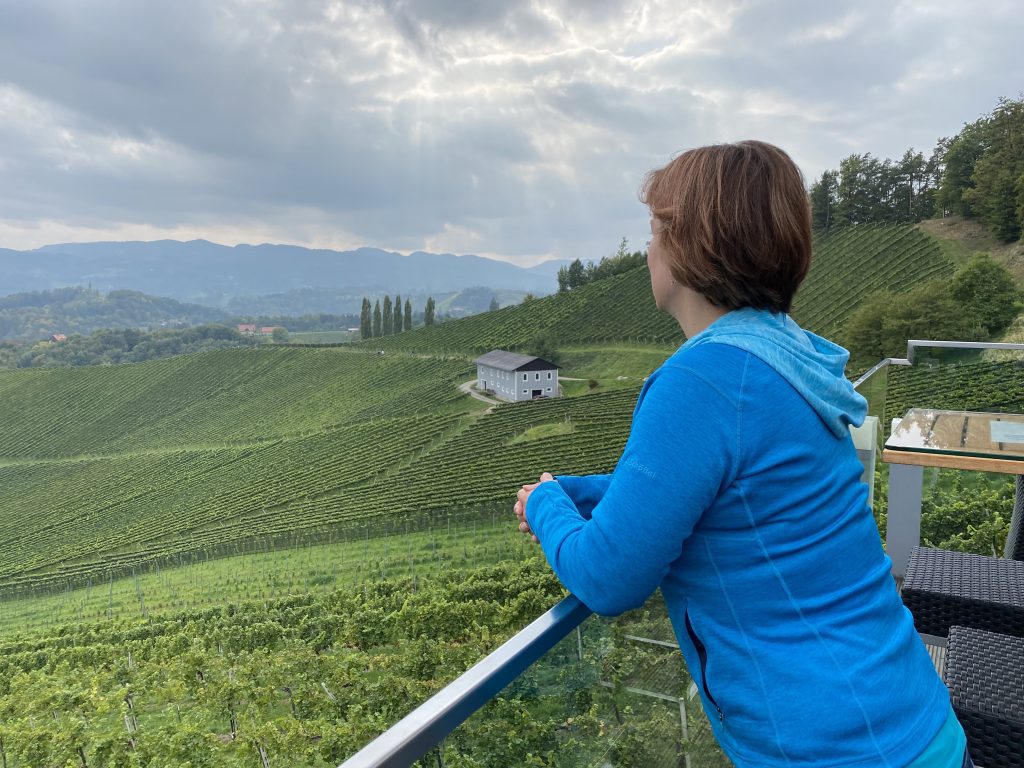
Sustainability
Austria has long been a leader in the environmental sustainability movement, and Styria contributes more than its fair share to that leadership. The area in and around Graz is home to a public-private partnership called the Green Tech Cluster, which was started in 2005 and aims to foster innovation and growth in green technologies. The Green Tech Cluster has helped the region develop into a hub of green technology, which has in turn helped put Styria on the world map and contributed significantly to its economic development. One amazing statistic: 20% of the green electricity generated worldwide uses technology developed within the Green Tech Cluster!
Southern Styria is also a place where farm to table is the norm rather than the exception, and if you like to pedal around on two wheels, you’ll love it there. Hubby and I took our bikes along on this trip, and on plenty of days we didn’t move our car at all!
Finally, this region is refreshingly uncrowded, and tourism is both small-scale and local in nature. It’s an ideal destination for those who want to really get a feel for the local culture while steering clear of areas affected by overtourism.

Active Travel
As I just mentioned, bicycling is a favorite activity in this region. E-bikes are extremely popular in the hilly wine areas of southern Styria, but if you’re fit enough to handle some climbing then regular touring or mountain bikes are great as well. We had regular mountain bikes along, and did a combination of road and off-road biking. Some of the climbs were challenging but manageable for me, especially with the occasional water or photo-taking break thrown in. 😉
Hiking is also a favorite activity, and there are some beautiful trails. Vineyard walks along pathways or local roads with little traffic are also popular. We did a lovely hike through the Deutschlandsberg Klause, a pathway that follows the Lassnitz River (more a creek, really) just above the town of Deutschlandsberg. Parts of the trail are gorge-like, others just lush river valley, but all are beautiful. The shade of the trees and the cool river keep temperatures down even on hot summer days, so it’s an excellent excursion to escape the heat. It’s a very easy and short out-and-back hike, or you can make it longer and more challenging by returning via a loop that ascends to the Deutschlandberg castle above town.
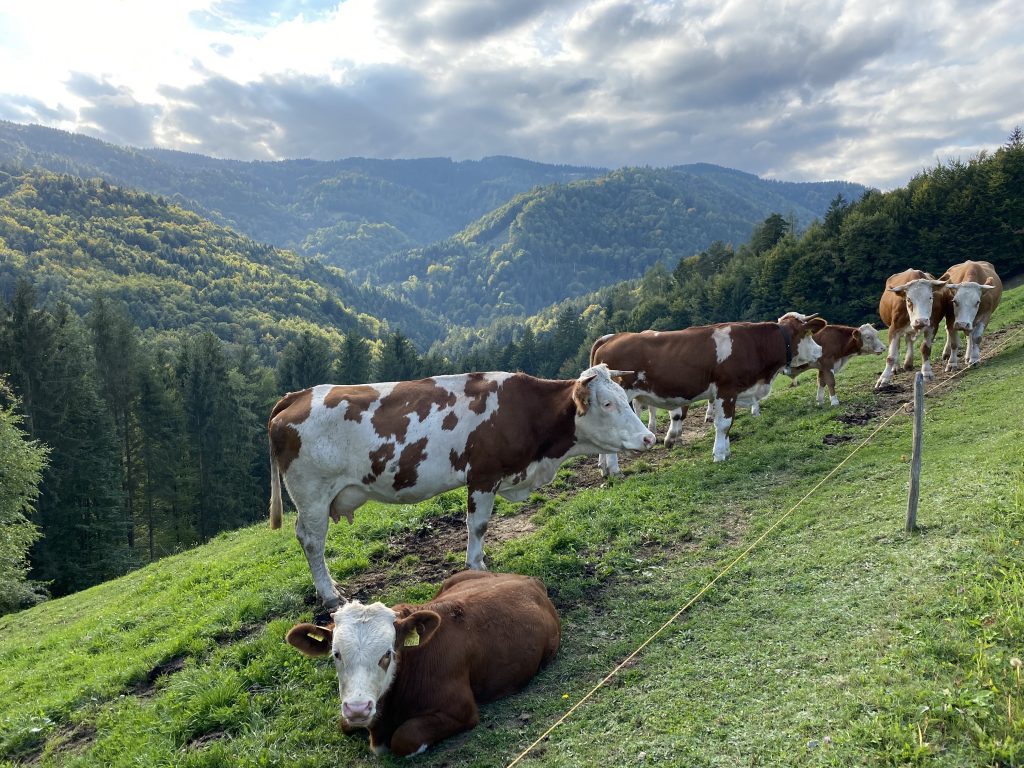
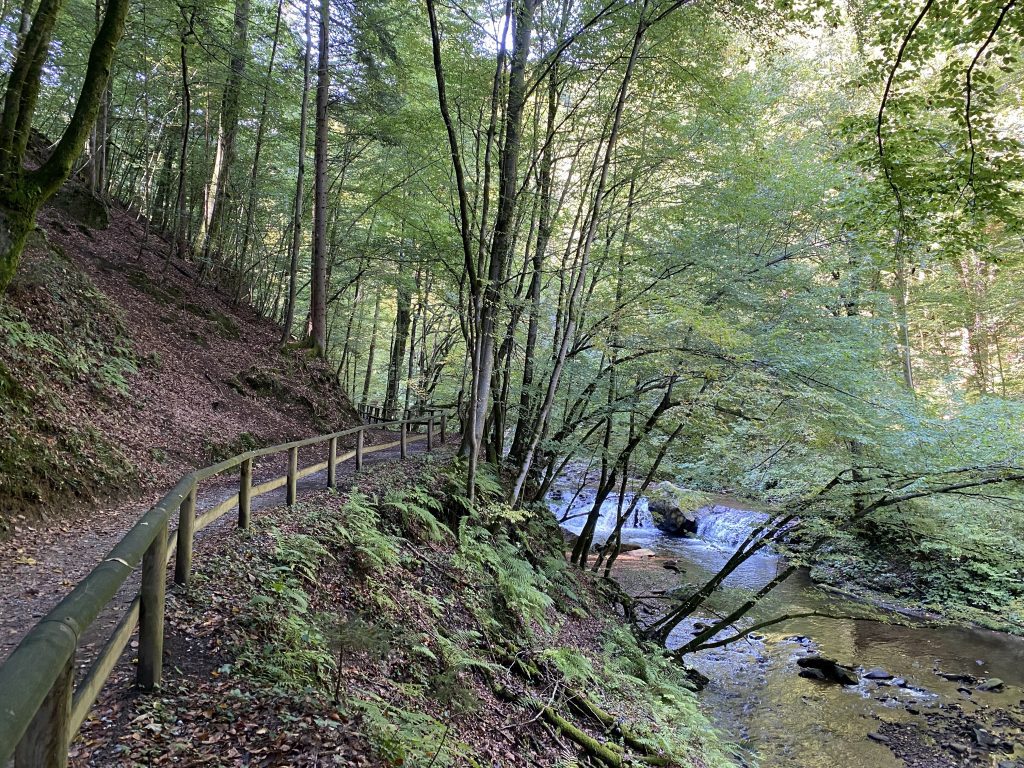
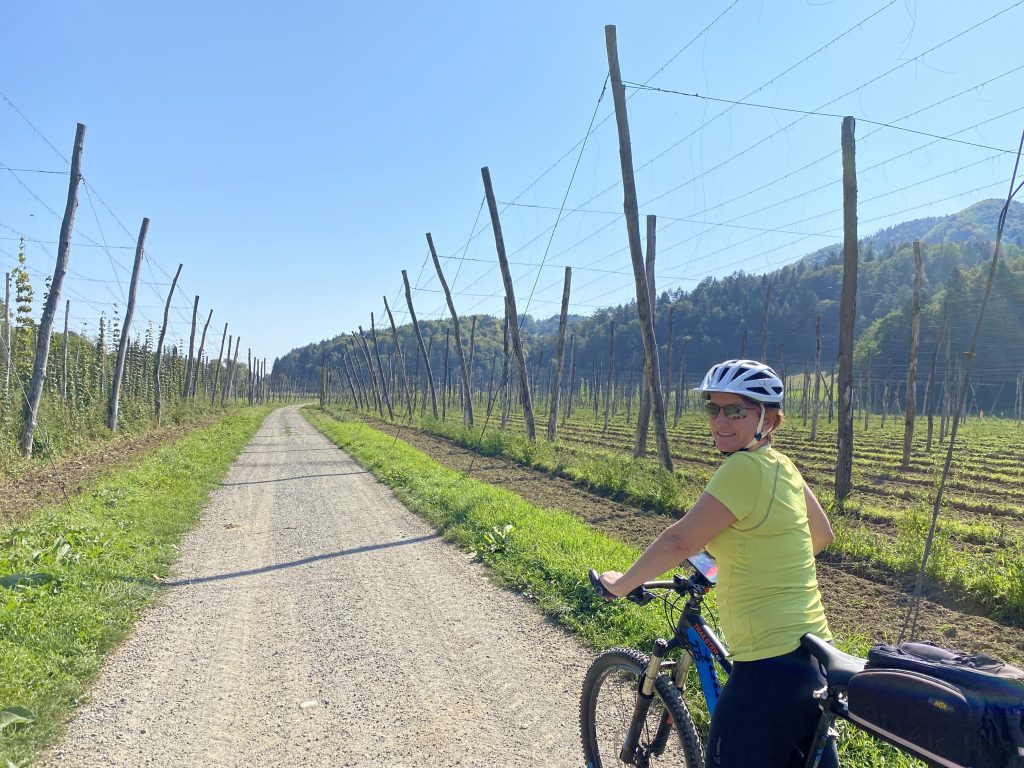
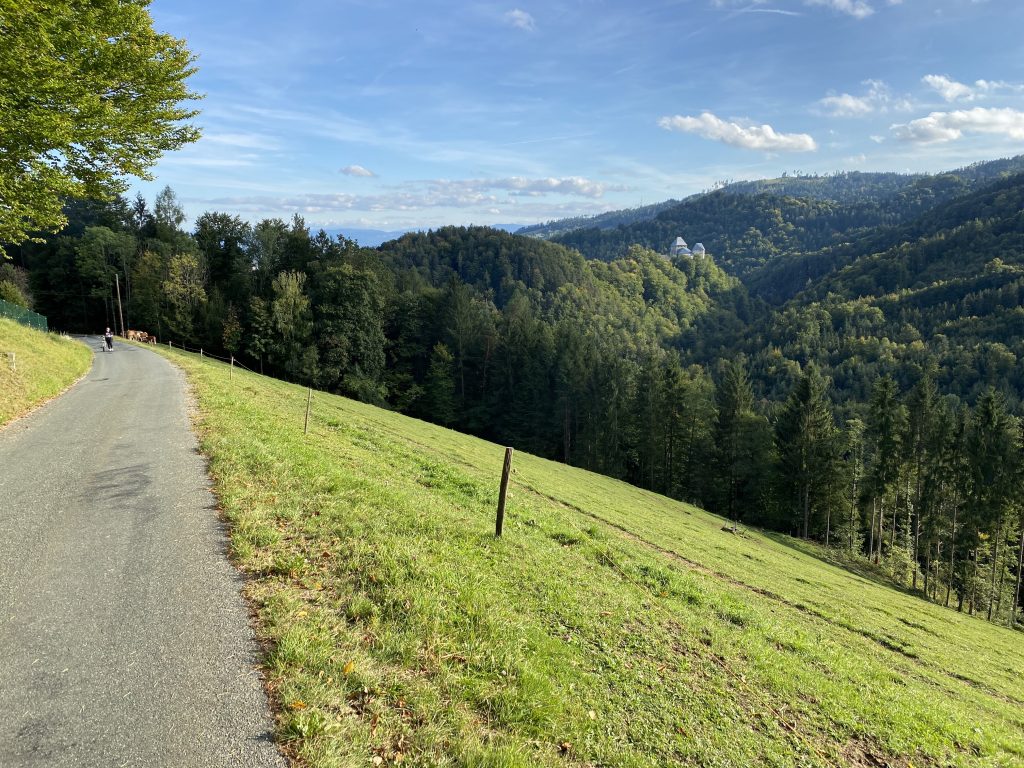
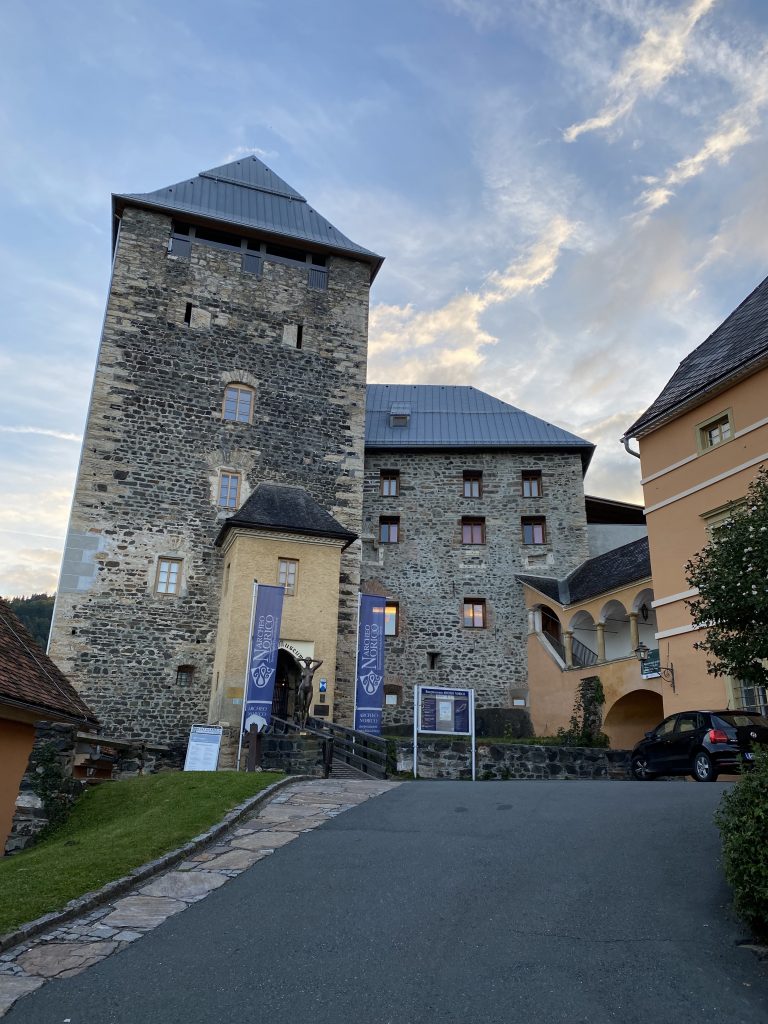
Culinary Travel
Styria is considered by some to be Austria’s top culinary region, and having visited most parts of the country, I have to agree. It isn’t so much that they have distinctive prepared dishes that are better or different than elsewhere. Rather, it’s a few distinctive ingredients and an overall quality and freshness of food that impressed me.
Pumpkinseed oil (Kürbiskernöl) is a top specialty of the region, and has a nutty and rather intense flavor which I really loved. It’s frequently added to salads and soups, and you’ll also find it used in spreads and even on ice cream!
And two words to describe the salads: fresh and flavorful! Living in northwest Europe, the sad reality is that even in summer, fresh vegetables like tomatoes often tend to lack flavor. They’re not bad, they just don’t have too much of that sweet, tangy tomato taste. Not so in Styria! Hubby and I both turned into little tomato fiends on this trip, because they tasted so good!
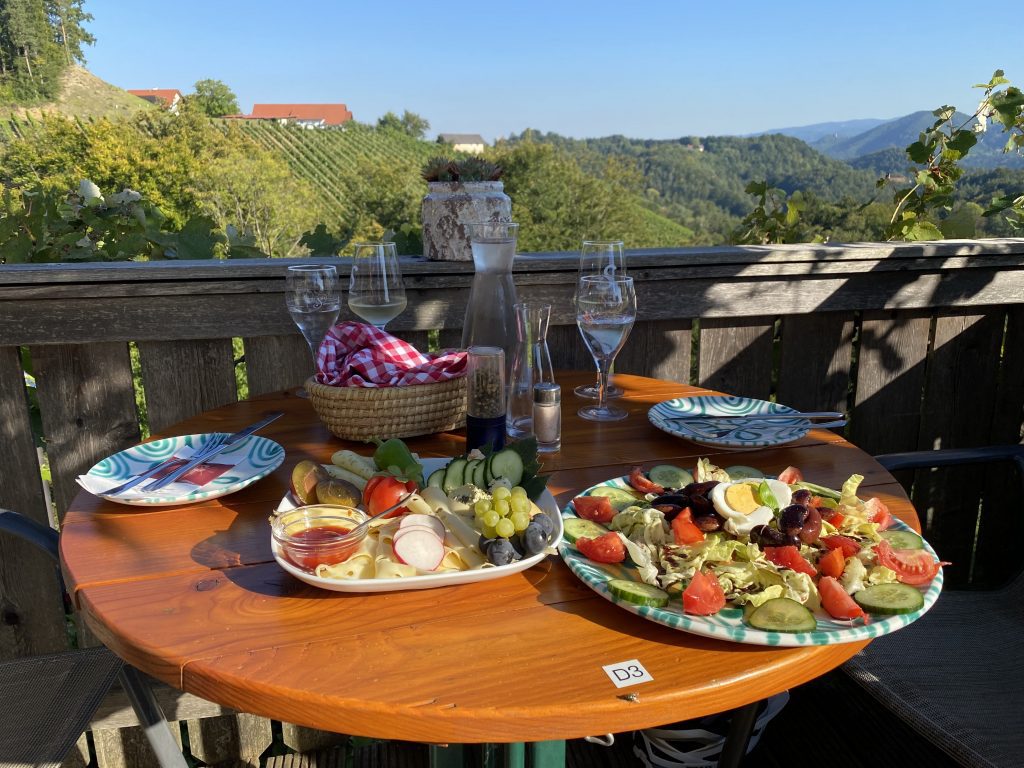
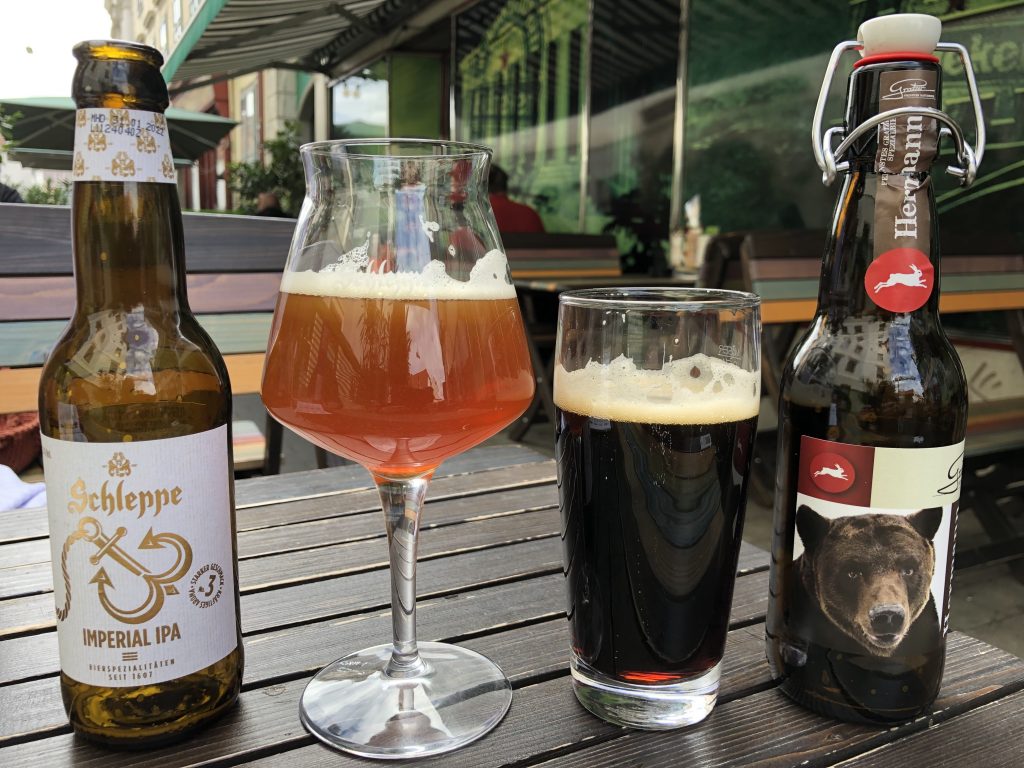
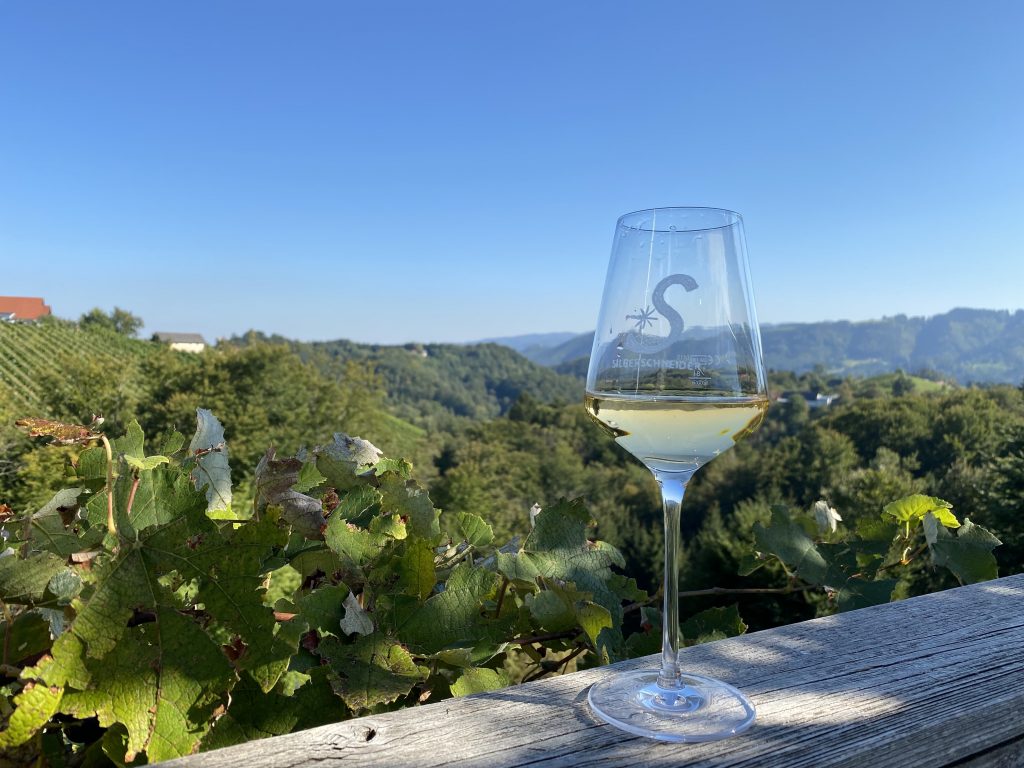
Southern Styria is also a well-known hop growing region. As a hobby brewer I have long been familiar with the Styrian Golding hop variety, although interestingly enough the hop-growing hasn’t seemed to encourage growth of any significant craft brewing industry. We did find a few local beers to try, as well as one small brewery to visit, so although it remains small it seems maybe a fledgling craft beer scene is beginning to develop.
And finally, who could forget the wine? We didn’t mind the lack of craft beer too much, because there were so many small but excellent wineries to visit. The varietal unique to this region is called ‘Schilcher’, and is a young rosé with generally high acidity that’s made from the local ‘Wildbacher’ grape. Otherwise, the area produces mostly white wines such as Sauvignon Blanc (which was much less grassy-tasting than in many other regions), Pinot Blanc and Pinot Grigio, Chardonnay (local name: Morillon), Welschriesling and Muscat. Red wines are less common, though we did have some notable ones; the top varietal is the Austrian Zweigelt.
Most wineries also operate a ‘Buschenschank’, which is a sort of seasonal restaurant that serves fresh, locally-produced foods. A few might have soups or other warm foods on the menu, but typically they serve only cold fare. The best known Buschenschank dish is the ‘Brettljause’, a plate of fresh meats, cheeses, spreads and vegetables typically served on a wood board and accompanied by fresh bread. Ya gotta have something to go with all that great wine, and these platters are the perfect accompaniment.
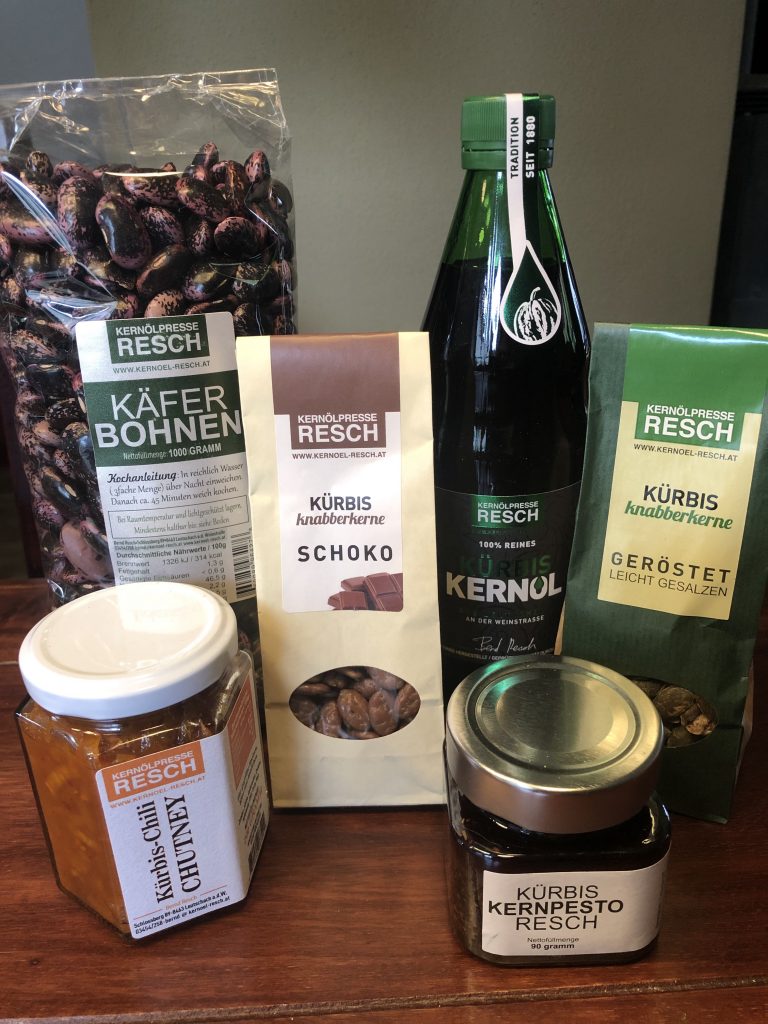
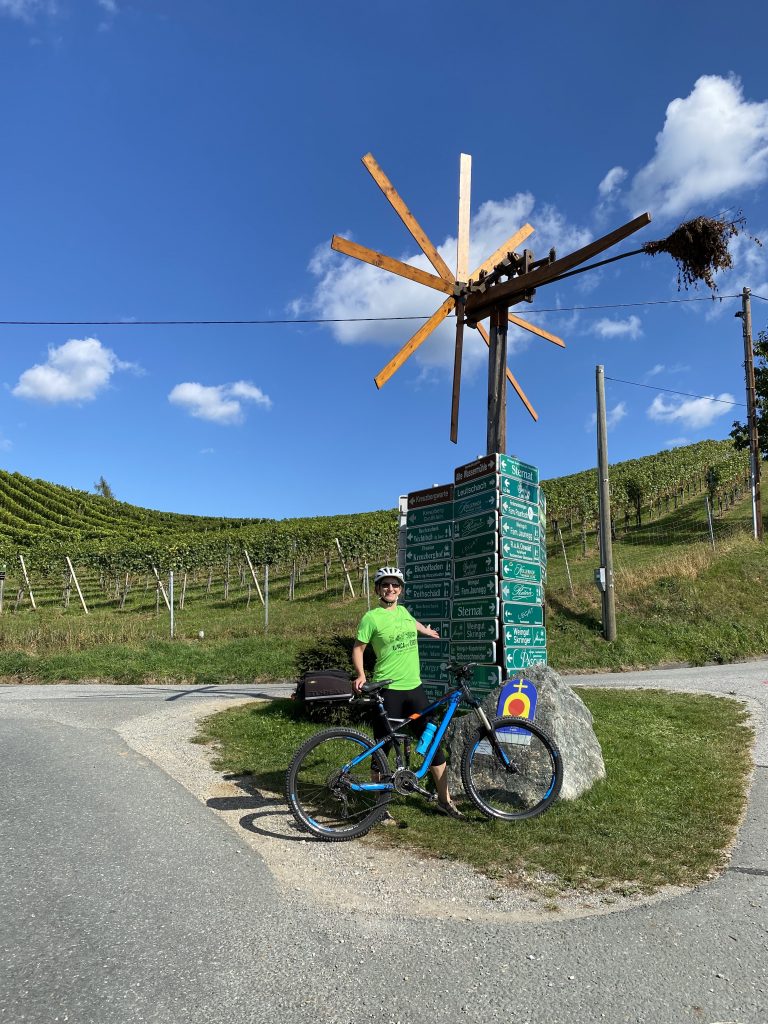
My Tips & Picks
Buschenschank Tip: This was a tough one, as there are so many lovely Buschenschänke of varying size, with great wine and food and gorgeous views. So, I thought I’d highlight my favorite of the smaller ones I visited: the Klapotetzhof Silberschneider. Their winemaker, Stefan Silberschneider (who doesn’t look a day over 25), won the 2021 Falstaff award for Young Winemakers in Styria, and the small dining courtyard with its own Klapotetz, is cozy and offers stunning views. Top it off with a nice assortment of wines and excellent, fresh Buschenschank fare, and you really can’t go wrong with an afternoon spent here. If you can’t bring yourself to leave, they also have a guesthouse!
Activity Tip: Graz has a really unique option for getting down from the Schlossberg: a slide! It’s literally built inside the mountain, and you needn’t be a kid to enjoy it – in fact, there is a minimum height requirement of 130cm (4’3”), and most people in the short line with us were adults! It’s nothing extreme, and you slide on a protective mat so no worries about damaging clothing or shoes. The current cost is €5, and it’s good fun!
Restaurant Pick: It’s on the high end of things in terms of price, but if you don’t mind splurging then Lieperts, right on the main drag in Leutschach, is one of the top restaurants in all of Styria. Dinner is exceptional, a creatively and beautifully presented 5-7 course menu, with wine pairings available as well. If the dinner doesn’t fit your budget, they also open for breakfast followed by snacks and drinks all afternoon (on their lovely terrace if weather permits).
Planning Your Visit
Getting there: Graz Airport has several flights to European cities, including Frankfurt, Munich, Amsterdam and Zürich. Graz also has good train connections to nearby cities such as Vienna, Ljubljana and Zagreb.
Getting around: Graz has a good tram network within the city, and there are regional train lines running to both southern and western Styrian towns. In the smaller villages bicycles and e-bikes are enormously popular, and there are generally taxis available in the evening if you need them (though be warned, they are rather expensive!). If you wish to explore a wider area it can be a challenge without a car, but if you’re staying a shorter period and simply want to relax in one place, you can certainly do so without your own wheels.
Where to stay: In southern Styria I’d recommend basing yourself in or around Ehrenhausen, Gamlitz or Leutschach. All three are attractive towns with a small selection of restaurants and lodgings. One recommendation in Leutschach is Rebenlandhof, a small family-run inn with seven reasonably-priced rooms and an on-site restaurant, plus the added convenience of being located within easy walking distance of a number of restaurants and shops.
You’ll also find numerous small hotels and guesthouses in the hilly vineyards surrounding all three, some of them run by wineries. Basing yourself in one of these is a great way to enjoy the scenery and solitude of the hills, but you’ll probably want to have a car in order to reach restaurants, shopping, etc.
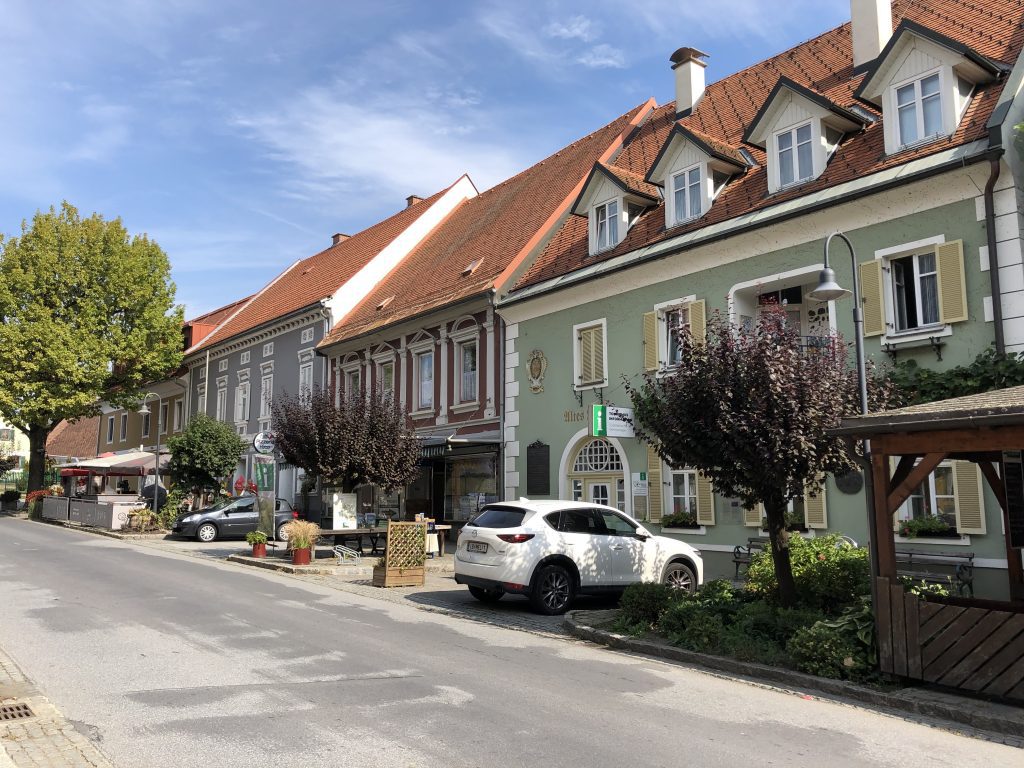
In western Styria, Deutschlandsberg is a good choice. It’s a bit larger than the southern Styrian towns, but offers a decent selection of small hotels and restaurants in close proximity to its walkable center. A smaller alternative is nearby Sankt Stefan ob Stainz.
I stayed five nights near Leutschach and another five nights in Deutschlandsberg and can recommend both, but when I return I’ll likely stay in Leutschach or a nearby village. I found this region to be more scenic and quaint, and great for cycling.
When to go: I visited in late September, which is an ideal time. The weather is still warm and the days still relatively long, but the harvest is only just beginning so the wineries and Buschenschänke are generally available for visiting. As the harvest time ramps up the smaller wineries in particular can sometimes close their tasting and dining areas because they are too busy harvesting; keep this in mind if you visit in the peak harvest season of October. I’m sure spring and summer are great, too!
I hope you’ve had fun reading about this lesser-known corner of Austria!
